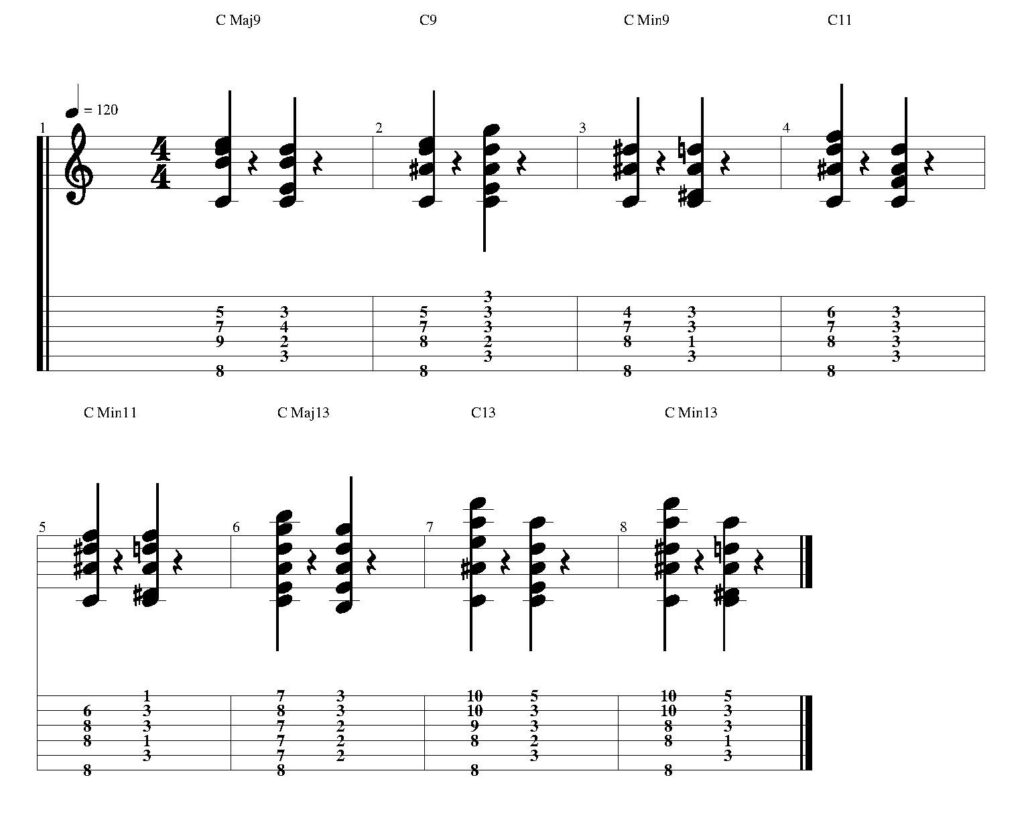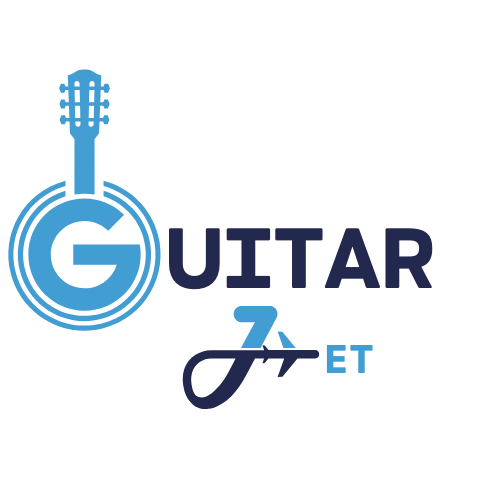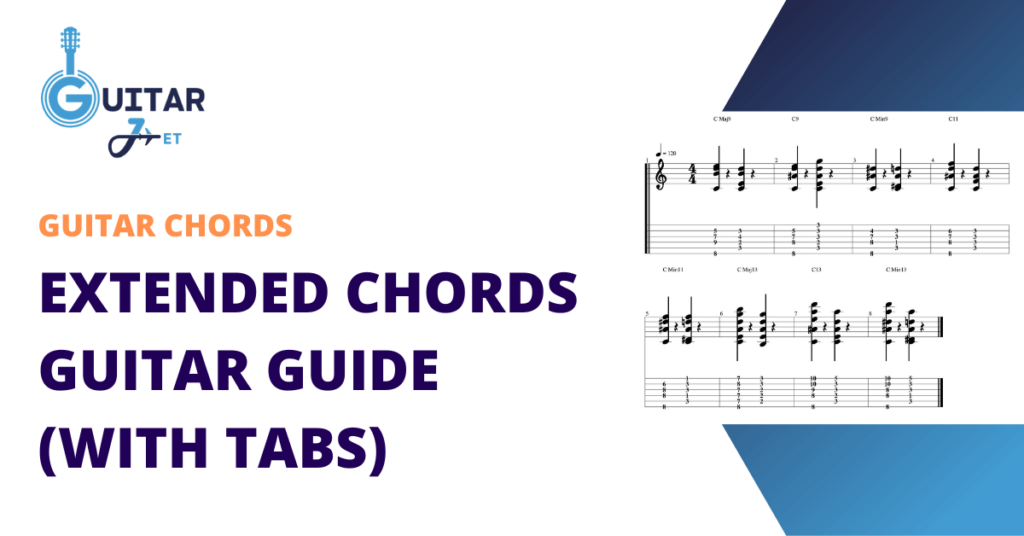This is an easy extended chords guitar guide with tabs and chord shapes.
In it you’ll learn, step-by-step, about:
- The extended chord definition
- 9ths, 11ths, and 13ths
- How to play extended chords on your guitar
Now let’s play some guitar!
Table of Contents
What Are Extended Chords on Guitar?
Extended chords add “extensions” to your triads and 7th chords by adding 9ths, 11ths, and 13ths.
Let’s break this down.
How to add a 9th, 11th, or 13th
Let’s take a quick look at the C major scale: C-D-E-F-G-A-B
Here are the corresponding intervals for each note in the scale.
| C | D | E | F | G | A | B |
| 1 | 2 (9) | 3 | 4 (11) | 5 | 6 (13) | 7 |
As you can see, D is the 9th, F is the 11th, and A is the13th. These are your added tones or extensions.
Extended Chord Formulas
You construct extended chords by stacking thirds (or 3rds) on top of 7th chords.
| Major 9th | 1-3-5-7-9 |
| Dominant 9th | 1-3-5-b7-9 |
| Minor 9th | 1-b3-5-b7-9 |
| Major 11th | 1-3-5-7-9-11 |
| Dominant 11th | 1-3-5-b7-9-11 |
| Minor 11th | 1-b3-5-b7-9-11 |
| Major 13th | 1-3-5-7-9-13 |
| Dominant 13th | 1-3-5-b7-9-11-13 |
| Minor 13th | 1-b3-5-b7-9-11-13 |
As you can see, there are 9 primary types of extended chords here.
Note: The major 11th chord has the strongest dissonance because the major 3rd clashes with the 11th. Because of this, the 3rd is often removed from major 11th chords in practice.
Common Extended Chords Guitar Shapes
Here you can see 2 common shapes for each type of extension chord on the guitar. Memorize these shapes, and you’ll have a stronger knowledge of chord theory and harmony than 99% of other guitar players.


